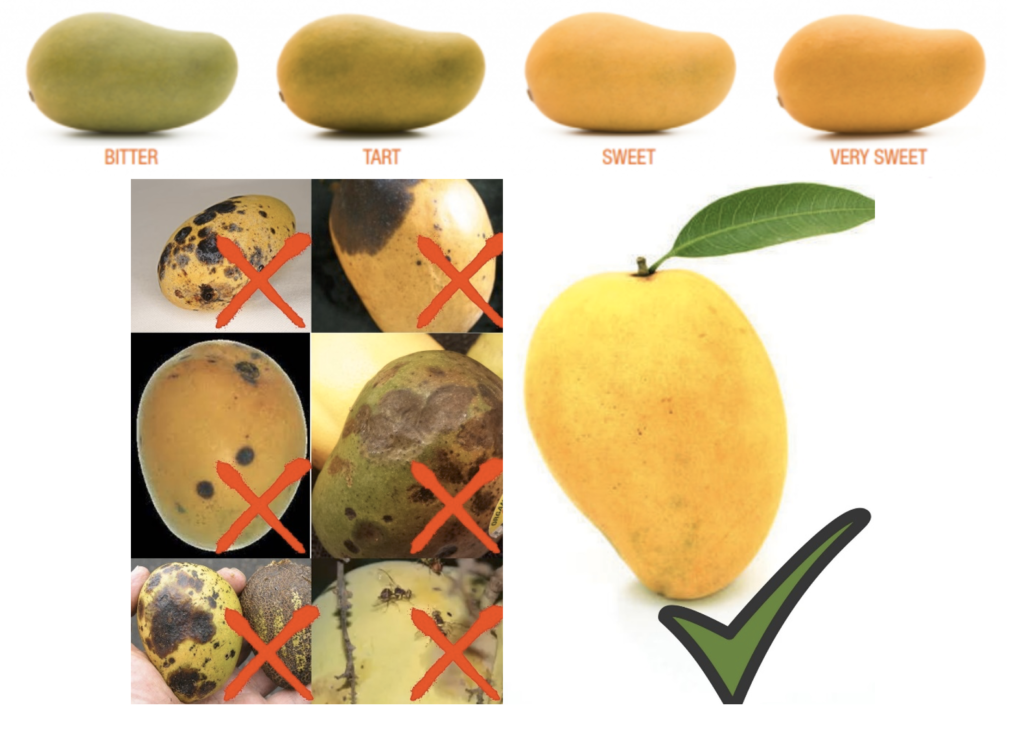It’s Asaar, the season of mango harvesting, selling, and buying! Mango is truly the king of tropical fruits, loved by many for its juicy, sweet, and intense flavor. However, many people struggle to pick the best quality mango from the market and often end up disappointed. Sometimes sellers might even try to convince you that lower-quality mangoes are the best, so it’s important to know what to look for.
Don’t worry. I’m here to share some simple tips to help you choose the perfect mango without any regrets. Follow these guidelines, and I’m sure you’ll enjoy the best mangoes this season.

How to Choose the Best Quality Mango
- Visit multiple stores. Don’t settle for the first mango you see. Explore several markets to find fresh, high-quality mangoes.
- Check the appearance. The mango should look fresh and free from scratches, black spots, holes, cracks, or rotting areas. Damaged mangoes spoil faster and may carry bacteria or fungi.
- Feel the mango. When you gently squeeze a mango, it should yield slightly but still feel firm. This indicates the mango is ripe but not overripe. Too soft mangoes spoil quickly, while too hard mangoes may not be ripe yet.
- Don’t rely on color alone. Mango varieties differ in color when ripe. Some turn red, yellow, green, or a mix. So, color is not a reliable indicator of ripeness or quality.
- Smell the mango. Mangoes give off different aromas depending on the variety. A ripe mango should have a pleasant, mild fruity scent. Not a strong, sour, or alcoholic smell, which indicates overripeness or fermentation.
- Consider your consumption timing. If you want to eat the mango right away, choose one that is ripe and ready. If you plan to store it for several days, pick a mango that’s firm and not fully ripe yet. Avoid mangoes that are too hard, as they take longer to ripen.
- Weight matters. Ripe mangoes tend to feel heavier than unripe ones because they contain more water. If the mango feels heavy for its size, it’s likely juicy and ripe.
- Check the texture. The mango’s skin should be tight and uniform without soft spots or wrinkles. Wrinkled skin usually means the mango was picked too early and may lack flavor.
- Latex and petiole. Mangoes with a small stem (petiole) still attached tend to store longer. Also, avoid mangoes with excessive sticky latex on the surface.
- Organic and chemical considerations. Be cautious of mangoes that have been artificially ripened with chemicals or heavily sprayed with pesticides. These can be harmful to your health and affect taste. Choose organic or naturally ripened mangoes whenever possible.
Finally, remember that quality mangoes may be a bit more expensive but offer better taste and nutrition. If a mango looks cheap but poor in quality, it’s better to skip it.
With these tips in mind, you’ll be ready to pick the best mangoes this Asaar season. Enjoy the king of fruits to the fullest!




